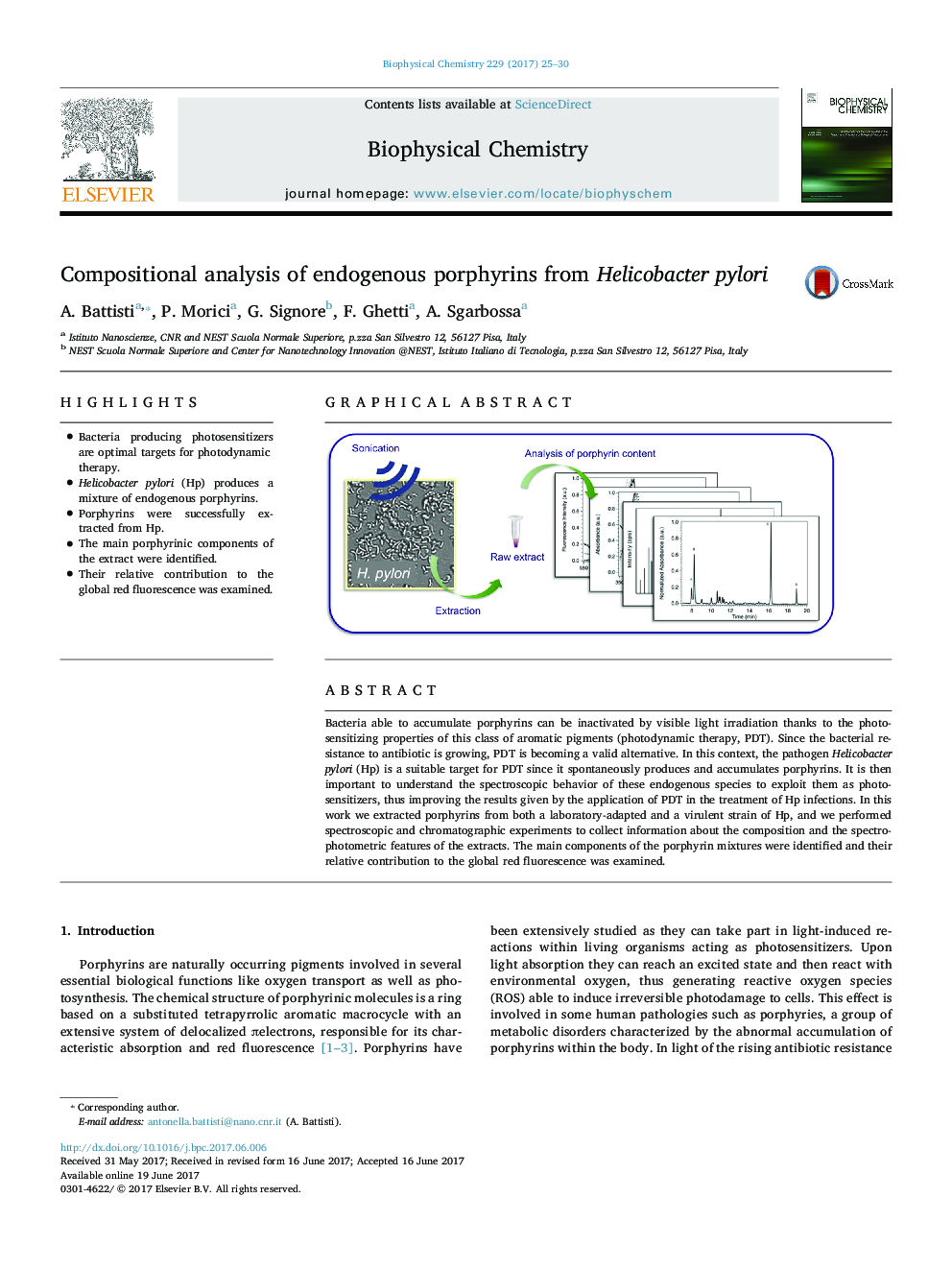| Article ID | Journal | Published Year | Pages | File Type |
|---|---|---|---|---|
| 5370604 | Biophysical Chemistry | 2017 | 6 Pages |
â¢Bacteria producing photosensitizers are optimal targets for photodynamic therapy.â¢Helicobacter pylori (Hp) produces a mixture of endogenous porphyrins.â¢Porphyrins were successfully extracted from Hp.â¢The main porphyrinic components of the extract were identified.â¢Their relative contribution to the global red fluorescence was examined.
Bacteria able to accumulate porphyrins can be inactivated by visible light irradiation thanks to the photosensitizing properties of this class of aromatic pigments (photodynamic therapy, PDT). Since the bacterial resistance to antibiotic is growing, PDT is becoming a valid alternative. In this context, the pathogen Helicobacter pylori (Hp) is a suitable target for PDT since it spontaneously produces and accumulates porphyrins. It is then important to understand the spectroscopic behavior of these endogenous species to exploit them as photosensitizers, thus improving the results given by the application of PDT in the treatment of Hp infections. In this work we extracted porphyrins from both a laboratory-adapted and a virulent strain of Hp, and we performed spectroscopic and chromatographic experiments to collect information about the composition and the spectrophotometric features of the extracts. The main components of the porphyrin mixtures were identified and their relative contribution to the global red fluorescence was examined.
Graphical abstractDownload high-res image (109KB)Download full-size image
